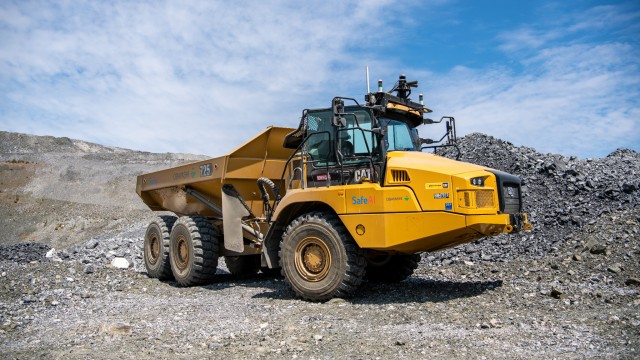Collaboration targets retrofits of autonomous, zero emission heavy vehicles in off-road uses
SafeAI will collaborate with Siemens to create an autonomous, zero emission heavy vehicle fleet for Obayashi Corporation, building off an earlier partnership testing an autonomous articulated dump truck to expand into more heavy equipment uses.
A fleet of 300 construction trucks operated by Obayashi, ranging from 45 to 65 tons, has been identified for retrofitting to equip them for autonomy and zero emissions. The first retrofit started in May, and is expected to be ready by the end of 2022. The collaboration is expected to scale across the entire fleet over a three-year period.
“At SafeAI, we’ve always been committed to making heavy industry safer and more productive. Now, in partnership with Siemens, we can add ‘more sustainable’ to that list,” said Bibhrajit Halder, founder and CEO of SafeAI. “Siemens has already built a track record of advancing on-road electrification. Now, together, we can deliver these capabilities, at scale, to off-road industries. With this partnership, our present and future customers can experience the powerful, synergistic benefits of autonomy and electrification.”
Full electrification of heavy vehicles is still at an early stage, but improving maturity of technology, total cost of ownership, government incentives and regulations are aiding in moving these efforts forward, according to SafeAI, with more than four million zero emission heavy vehicles expected to be deployed by 2030. Beyond the zero-emission benefit, electric vehicles also offer improved performance, negligible maintenance costs and longer uptime and life, improving productivity and reliability while lowering costs. For this project, it is estimated that the total cost of ownership for the retrofitted electric vehicle will be 15 to 30 percent less than that of the original internal combustion engine vehicle.
“Heavy vehicle retrofit for autonomy and zero emission is an innovative yet cost-effective solution that will fast track adoption of sustainable technologies for heavy vehicles. Not to forget, retrofit is a form of reuse or recycle and hence in line with circular economy principles to better meet net zero goals. Combined with creative financing models and rigorous focus on safety, there could be as many retrofitted zero emission heavy vehicles as newly built zero emission heavy vehicles by 2030,” said Zubin Sarkar, Head of Strategy, Business Development and Marketing at Siemens Commercial Vehicles. “There’s a tremendous opportunity ahead for companies across industries like construction, mining, harbour, and agriculture to reduce their carbon footprint, all while improving operations and lowering costs. In partnership with pioneers like SafeAI and Obayashi Corporation, we can imagine a more sustainable future for these industries.”
The project also incorporates unique cutting-edge features from Siemens such as an autonomous pantograph to enable automatic charging and an autonomy analytics suite to ensure a wide array of reliable and safe applications. Simulytic, a new Siemens AG venture, has been established to help accelerate the deployment of autonomous vehicles by offering a trustworthy platform accessible to regulators, government, insurance, tech developers and operators alike. Andy Gill, Chief Operating Officer at Simulytics adds, “By creating a digital replica of the autonomous vehicle in its deployment environment, we can use our simulation technology to provide independent safety and performance analytics for both SafeAI and Obayashi.”
The retrofit project will be engineered by a system integrator known for its expertise in electrification and mechatronics of trucks, AVIA Engineering. “We are thrilled to further deepen our long-time collaboration with Siemens in the field of vehicle electrification with such an innovative project,” said David Sánchez, owner and CEO at AVIA Engineering. “To integrate a fully electric powertrain and improve vehicle attributes in such a demanding application is a task at the cutting edge of technology, and a technical challenge that we are delighted to take on behalf of our partners.”
“We firmly believe the future of the construction industry is both autonomous and electric—and we’re determined to establish that future ourselves,” said Hiroto Sato, COO at Obayashi SVVL (Silicon Valley Ventures & Laboratory). “We’ve already started to see the powerful impact autonomous technology can have through our work with SafeAI over the last year. Now, with SafeAI’s partnership with Siemens, we will pioneer more sustainable operations to continue leading the way toward a smarter future for our industry.”
